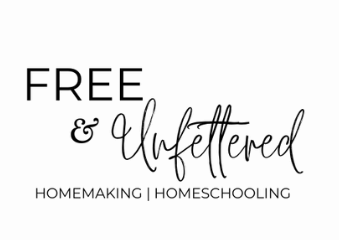Introducing Sandpaper Letters: A Free Progress Sheet to Simplify Homeschooling
Let me preface this by saying I’m not much of a planner. That’s why when it comes to homeschooling, I really try to keep it as simple as possible. One of the things I’ve found most helpful with organizing our Montessori-inspired homeschool is using visual progress sheets rather than a fixed day-to-day checklist.
I created this letter progress sheet shortly after I began presenting sandpaper letters to my oldest daughter. It includes all 26 letters plus 16 digraphs. Each letter or digraph is framed in with dashed lines. Each dashed line represents part of the Montessori three-period lesson.
If you’re new to Montessori and are unsure what a three-period lesson is, click here for a great overview.

So how does it work?
I promise, it’s really simple. Upon the initial introduction of a letter, you would trace over the left dashed line as a way to remind yourself that this letter has already been formally introduced.
Once your child is able to recognize and identify each letter or digraph, you would then trace the top dashed line. For example, if you’re able to ask your child to pick up the letter that makes the sound /a/ or, on a different occasion, to give you the letter that makes the sound /a/ and they are able to successfully identify the correct letter repeatedly, this indicates proficiency with the second part of the three-period lesson.
When your child demonstrates mastery with a letter or digraph and is easily able to tell you the sound it makes, you would then trace over the right dashed line, thereby completing the box around the letter or digraph.
Of course this doesn’t mean that once a box has been completed you ignore it. Repeated exposure to letters already known helps boost a child’s confidence, serves to further solidify their understanding, and, by urging a child to continue to trace over the letter, helps to prepare the hand for writing.

And how does this help?
The progress sheet makes it incredibly easy to see which letters have already been mastered, which letters still need to be introduced, and which letters a child may be struggling to gain proficiency in. It serves as a visual reminder so you are able to adjust your letter presentations and activities accordingly to fulfill your child’s individual needs.
For planning purposes, I simply look at the progress sheet in my notebook at the start of each week and see which 2-4 letters and digraphs to specifically focus on and often, as stated above, include at least 1 letter my child already knows. Looking back, I would have introduced digraphs alongside letters, but at the time I did them separately.
To be clear, there is no specific order you must follow when presenting the sandpaper letters. I’ve included what I believe is one of the most common orders of presentation for the 26 letters of the alphabet, but according to Maria Montessori in The Discovery of the Child: “I have not found it very practical to follow any special rule in teaching the consonants. Very often a child’s curiosity about a graphic symbol leads to a teaching of the consonant he desires. The sound of a name may arouse the interest of a child in knowing the consonants necessary to form it. And the desire of a child is a more efficacious means for deciding the order to be followed than any kind of reasoning.”
This progress sheet should make it easy to present the letters and digraphs in the order that works best for your child and not leave you wondering which ones are already known and which still need to be introduced.
IMPORTANT: While we specifically use tactile letters in our Montessori-inspired homeschool, this progress sheet could easily be used by anyone interested in tracking a child’s knowledge of letter symbols and their associated sounds. You do not need to have sandpaper letters to make use of this sheet.
One final note, please be aware the letter “y” is introduced as both a consonant and as a vowel. I chose to introduce both sounds at the same time which is why there is only one “y” listed on the progress sheet.
language arts
Letter Tracking Sheet
The letter tracking sheet is available as a free download in the Resource Library. Simply subscribe to the newsletter below and grab your copy today.
As a newsletter subscriber you’ll receive the latest updates about resources available on the blog as well as exclusive discount codes.
If you have any questions about how to use the progress sheet, please don’t hesitate to ask. Simply leave a note in the comments below or reach out to me on Instagram at @freeandunfettered.
Don’t forget to pin this for later!







Hi there! I love this SPL record keeping page! Beautiful! I subscribed to your blog and tried to access the page, but it’s password protected. How do I get that password?
Thank you!
Hi there! After you subscribed to the newsletter, you should have received a follow-up e-mail with the password. If it hasn’t shown up yet, please check your spam folder to make sure it’s not hiding there. If you’re still unable to find it, please send me a direct e-mail at freeandunfetteredblog@gmail.com so I can resolve the issue. Thanks!